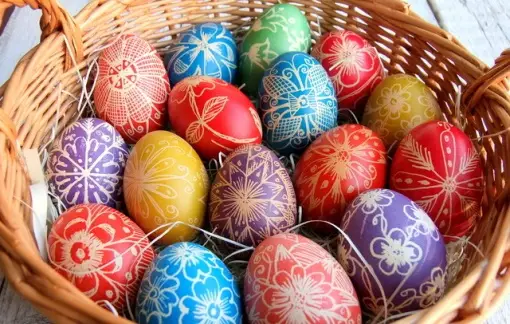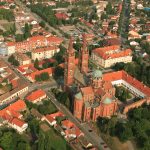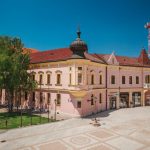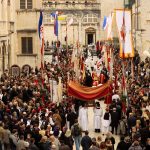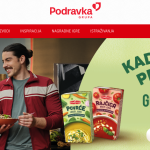With Lent being over on Palm Sunday, Holy Week and the final days before Easter have begun. Of course, that means believers who participated in relinquishing and fasting during Lent can finally start eating normally, except on Good Friday when fasting is strictly prescribed. Preparations for Easter include a lot of cooking and preparing sweet pastries to celebrate Jesus’s resurrection. Good Thursday is dedicated to the remembrance of Christ’s Last dinner and no one can work on their soils or crops. As already mentioned, Good Friday includes a strict fast with only one proper meal allowed, which symbolizes Jesus’s torment and death. After Good Friday, Good Saturday is reserved for silence and preparations of said meals that have everything from heavy meat to spring vegetables and more. However, the most important part of the Easter celebration is definitely an Easter basket, which contains a variety of foods reserved for blessing and later for Easter celebration, most commonly as a breakfast on Easter itself.
Easter Eggs
Most things in the basket are definitely Easter eggs (pisanice), or boiled chicken eggs with beautiful handmade designs that differ from family to family. This custom of decorating and gifting eggs was known throughout Europe, especially among Germans, Scandinavians, and Slavs. Even its age is confirmed by archeological grave finds. When it comes to Christianity, the egg is a symbol of the new and eternal life that Jesus made possible for people through the resurrection. In Croatian traditional culture, the custom has remained to this day. In the past, only domestic homemade colors were used for painting eggs and they were obtained from broccoli, onion peel, nettle, various grasses, and many more. Aniline dyes became popular much later. Wax was applied to the egg by a special funnel-shaped pen or pinhead; this technique also made it possible to obtain multicolored ornament. These traditional ways of painting Easter eggs came back – more and more people fall back to old customs because of healthy and more organic ways of painting. On Easter morning, eggs are put to use – children break eggs to determine who has the strongest one.
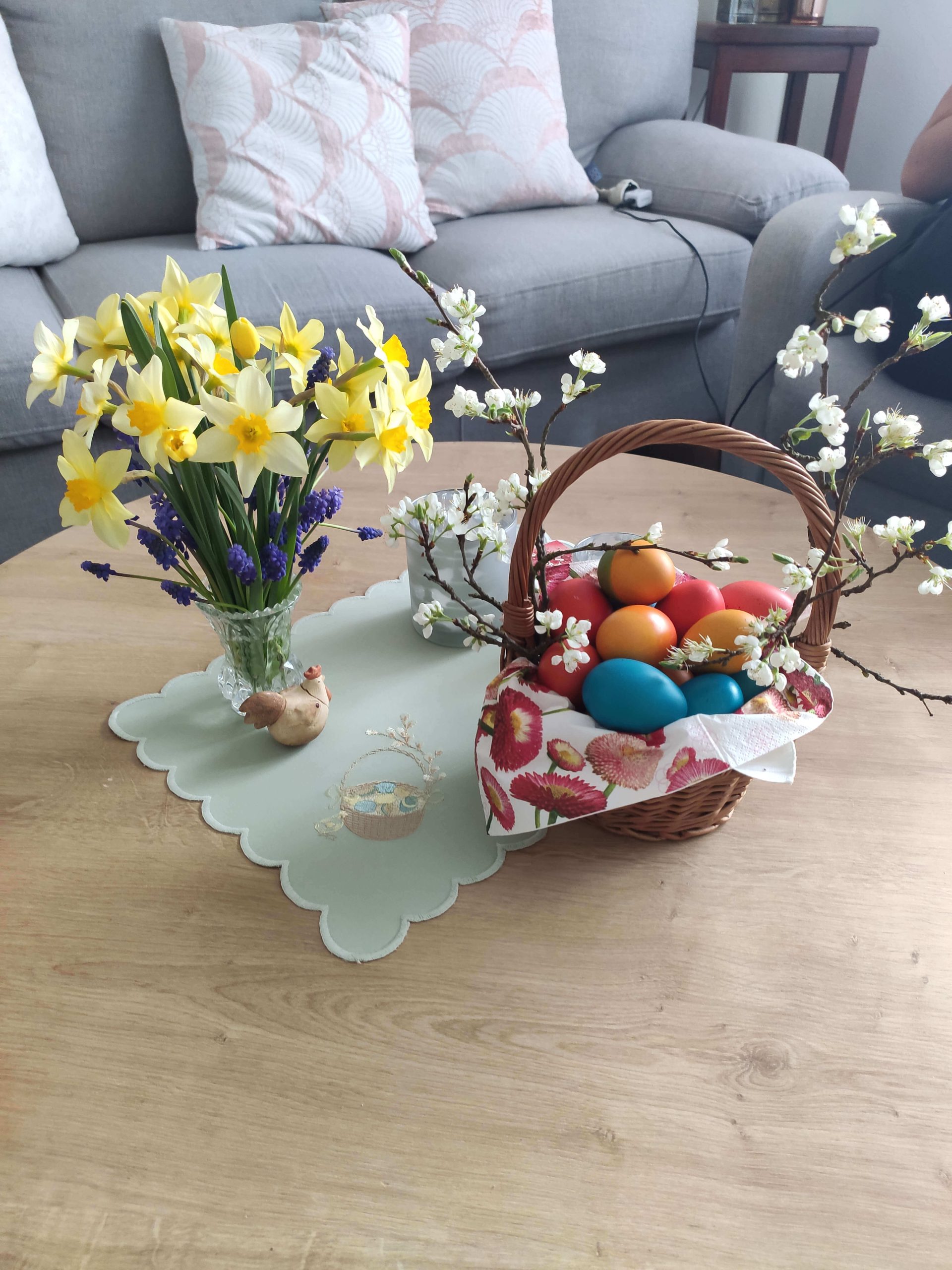
Colored Easter eggs and spring flowers on Easter (photo credit: Private album)
Unleavened bread
As we know a lot of Christian traditions are shared with Jewish customs and unleavened bread is part of that as well. It symbolizes Christ’s body and according to Bible, was present at Christ’s Last dinner. There are a lot of variations of bread throughout Croatia like normal pogača, pinca, however, unleavened bread is a customary Easter bread in Slavonia and represents sacrifice. Its texture is somewhere between hard and soft and has a neutral flavor which fits amazingly well with other Easter basket components.
If you’re interested in making this bread, here is my family’s recipe that’s been used every Easter for decades:
0,5 kg of smooth flour
1 package of baking powder
1 teaspoon of salt
4 egg yolks
1 egg
1 tablespoon of pork lard
10 dag of butter
Method:
Mix with milk so that it is neither soft nor hard. Let it sit for 10 minutes, after that put it in a small bowl with a diameter of 18 cm. Grease the bread really well with lard and put the bread in the oven preheated to 180°C. Bake it for 30 minutes, take it out, coat it with egg yolk and milk mixture using a brush, put it back in the oven, reduce the temperature to 150°C and bake it for 25 minutes more.
There you go! You have a proper Slavonian bread that’s part of every Easter basket.
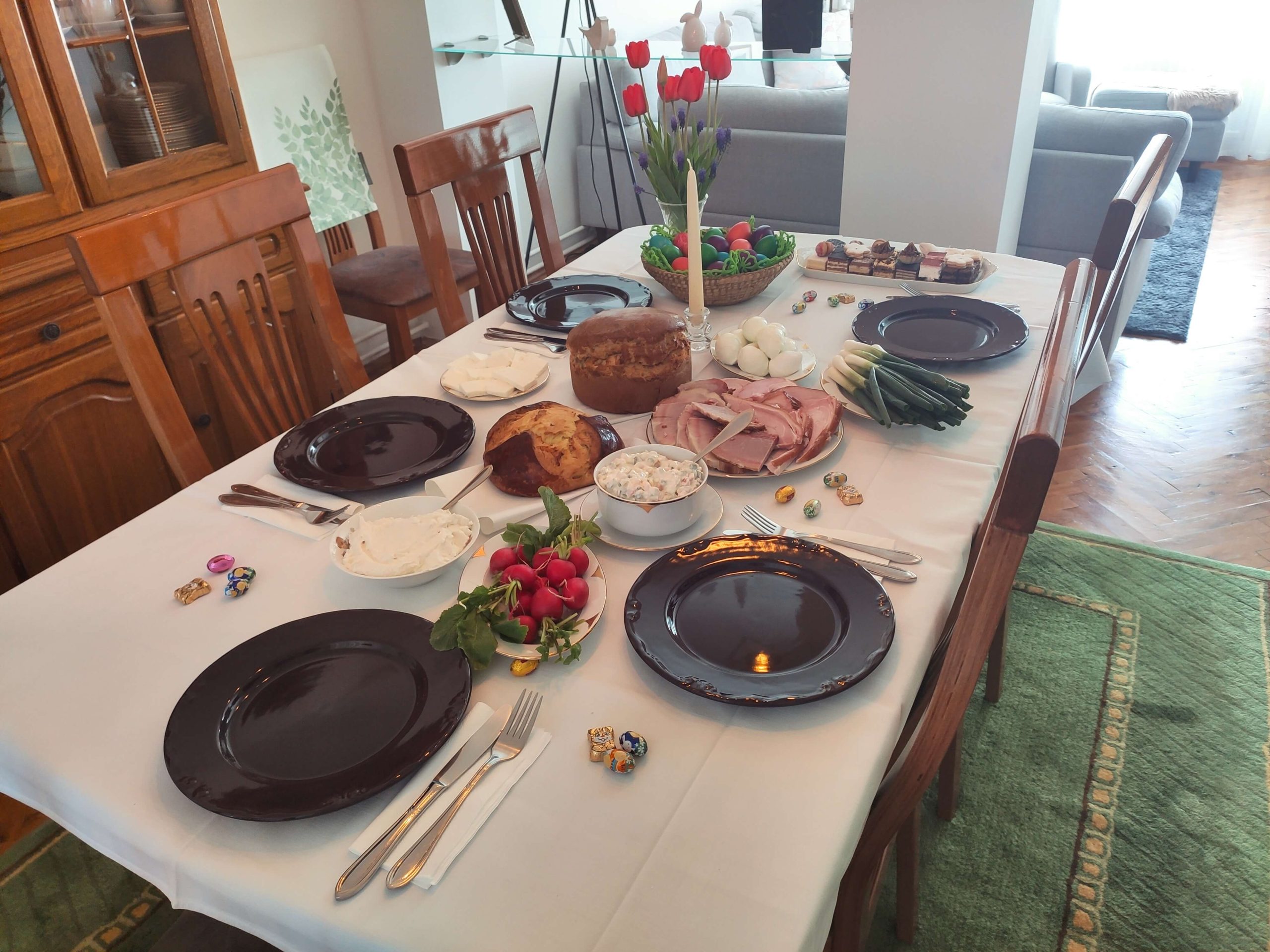
Easter breakfast with food from Easter basket (photo credit: Private album)
Ham
Fragrant-cooked ham is certainly the main star of the Easter table and what evaluates the quality of its preparation is juiciness. The type of meat is really important but the best is definitely pork meat or rather pork leg which is considered the “real” ham. Other than classic cooked ham that we know and love, there is an alternative – ham wrapped in pastry. Again, its preparation varies from family to family and the quality of the meat is determined by the financial status of the people who prepare it.
If you’re interested in the preparation of cooked Easter ham, check this recipe here.
Radish
The so-called spring queen of health and a vitamin bomb. Although radish is primarily associated with the Easter table, many people buy this vegetable because of its rich nutritional composition and medicinal properties. Indispensable food of every Slavonian Easter basket.
Green onion
If it’s planted before Spring, green or young onions are definitely an unavoidable vegetable for the Easter basket. Strong, spicy, and its intensive smell with ham bring something really special to every Slavonian household on Easter. Like radish, it is a great ingredient in a variety of Easter salads.
Sweet cakes and pastries
Last but not least, cakes and pastries are a must in every Slavonian Easter basket. From usual pies like cakes like mađarica, chocolate pie, white pie, honey pie, so-called Katherine (Katarina kolač), and coconut-walnut cubes that were and still are a staple for Slavonian desserts through decades, small cakes, pastries, and cookies are getting more and more popular in recent years. Likes of išleri, baskets (košarice), rum balls, linzers, triangles and so many more. Cherry or apricot strudel is also a recent pastry baked and consumed on Easter. Breskvice (peaches) as well – signature Slavonian cake.
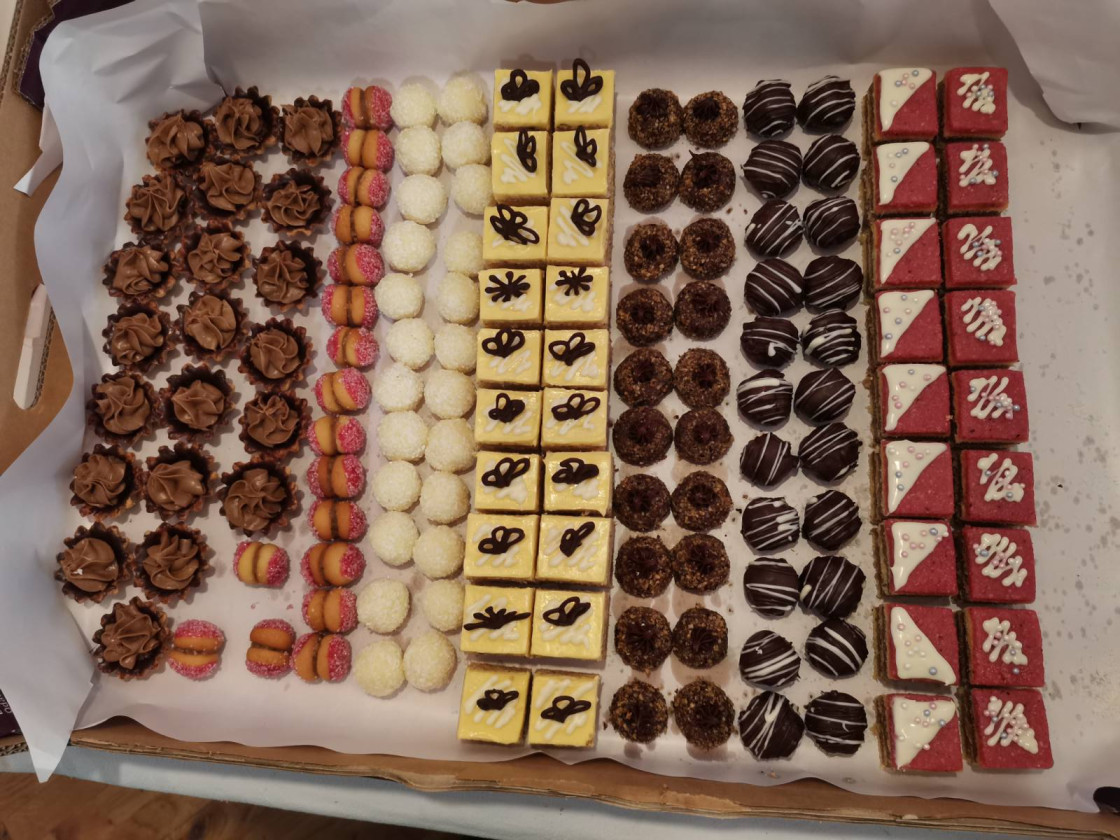
Sweet cakes and popular pies in Slavonia (photo credit: Private album)
Salt is also part of the blessed Easter basket with candles that will be lit on Easter breakfast and other various items that believers want to bless.
As said in the beginning, Easter is the most important Christian holiday. It celebrates Christ’s sacrifice and resurrection. Throughout the centuries, Croatians managed to save huge parts of their cultural and traditional heritage and it’s not a coincidence that Easter customs are one of the oldest traditional practices in Croatia’s history. It doesn’t matter if you’re not a believer, everyone is welcome to try the contents of a Slavonian Easter basket, take it, and in the end, try to make these delicious meals for themselves. At the end of the day, this is the time, not just for sacrifice, but for sharing and love as well.
Sretan Uskrs!
For more about lifestyle in Croatia, visit our dedicated TCN page.

